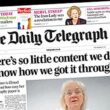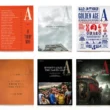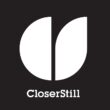It is seven years since Bauer entered Australia and New Zealand, with the acquisition of long-time market leader ACP Magazines from CVC private equity. It was a euphoric 2012 deal for Yvonne Bauer who, just two years before, had taken control of the family-owned, Hamburg-based publisher. It was paying “just” A$525m, less than one-third of ACP’s value just five years previously.
Ms Bauer beamed as she enjoyed her first days in an Australia famously in love with magazines, whose publishers had long enjoyed copy sales and profit margins ahead of their counterparts in the larger UK market and whose economy was experiencing its 19th year of continuous growth. Unlike Australia’s record-breaking economic growth, Yvonne Bauer’s smiles didn’t last.
In 2020, having racked up trading losses of some A$200m (and now with its fifth CEO), the family-owned company is preparing to quit the Australian media market. It’s had enough.
Having negotiated a controversial A$40m deal to acquire its closest Aussie competitor, Pacific Magazines (subject to regulatory approval), Bauer is in “advanced negotiations” to sell the enlarged company to Mercury Capital, of Sydney, for A$150m.
The bold strategic moves to reverse what has proved to be a A$700m blunder were initiated by former McKinsey and Dell executive Veit Dengler who started to reshape the Bauer portfolio in 2018. As chief operating officer, he has brought clarity to the management.
The £1.5bn total spending spree in acquiring EMAP, in the UK, and ACP had made Bauer a global force in magazines and substantially increased its exposure to advertising – seen then as an attractive move. But the deals had been striking for other reasons too. They were (by far) the largest acquisitions ever made by the cash-rich company which had grown largely by launching its own magazines.
The acquisitions had signalled a new era for the low-profile company whose most successful leader, Heinz Bauer, had marked his 70th birthday – between the two big acquisitions – by handing control to his 30-something, second-youngest daughter Yvonne. Everything had seemed to be changing.
The new generation was marked by Yvonne Bauer’s unprecedented decision to give newspaper interviews in Australia. She enthused: “Right from the outset, Bauer Media and ACP shared a passion for high-quality and well-produced magazines because we love the printed medium. …With its cleverly devised digital strategy, ACP is a perfect component of the Bauer Media Group – and that’s not all: through the acquisition…. our hope was also to boost our international business…ACP represents our vision for the future…. Australians are willing to pay adequately for information and entertainment.”
It’s all a bit embarrassing now but Ms Bauer’s euphoria was projected into a colourful new slogan (another Bauer first) proclaiming: “We Think Popular”. Years of steady and boring profitability had exploded into a brave new world of international magazine brands, digital plans, and global expansion. But some of the EMAP deal had already gone sour with the collapse of copy sales and profits from magazines like Heat and FHM – before being (much more than) compensated by what became the powering growth of the company’s UK radio stations.
Both EMAP and ACP suffered through their profit-dependance on weeklies. Gossip mags have been shredded by Twitter. But, compared with Australia, the disrupted but well-managed UK company was always media heaven, especially now with burgeoning radio revenues which have made it Bauer’s fastest growing market.
Although most observers thought Bauer over-paid for ACP, the 5 x historic profit was almost half the multiple it paid for EMAP. But it got worse. ACP Magazines’ EBITDA of A$100m the year before Bauer bought it, was expected to be at least A$70m the year after. But it didn’t even get close. By 2018, it managed to become only marginally profitable – after three years of losses.
The Aussie company’s revenue is now 25% of the A$850m it made in 2007 when James Packer sold his family-controlled PBL magazine and TV business (less some of its best digital investments) for a top-of-the-market A$5.5bn. CVC had snatched the deal from under the nose of rival KKR – by paying high.
CVC quickly lost most of its investment, its regional boss lost his job, and ACP Magazines (which had a 30% EBITDA margin in 2006, the year before Packer sold it) lost most of its value. That was the context as CVC’s shattered bosses enjoyed a last hurrah at the London Olympics and negotiated the sale to Bauer of what was still the largest magazine group in Australia and New Zealand.
Cue Yvonne Bauer’s euphoric interviews in the Sydney sunshine. But her joy was short-lived as the Aussie business lurched from one crisis to another, punctuated by the revolving door of CEOs, PR disasters including poorly-managed magazine closures, collapsing sales, and a virtual standstill in digital development. The change in ownership from a pained private equity firm to the most experienced magazine publisher became agony for the company’s Australian employees.
It was an uncharacteristic setback for Bauer which had started in 1875, when the young Ludolph Bauer went into business as a printer on a borrowed press in his Hamburg home. Ten years later, Bauer and his son Heinrich became publishers with the free newspapers Rothenburgsorter Zeitung and Hammerbrooker Zeitung. By 1927, when they had moved to the city address that has been the Bauer headquarters ever since, the family had achieved its greatest success with a circulation of 500,000 for the weekly Rundfunkkritik. They were on their way.
Post-War, Bauer quickly became the country’s largest magazine publisher with the launch of the illustrated weekly Quick in 1948, and the bestselling TV listings magazine Horen ind Sehen, which is still selling more than 700,000 copies. Along the way, Bauer bought up magazine and children’s comic companies, culminating in the acquisition of Neue Post, still one of Germany’s biggest-selling women’s weeklies. That was in 1961, the year the 22-year-old Heinz Bauer, great grandson of the company’s founder, became CEO.
Heinz, who had trained as a printer and studied business at university, hit the ground running. He set about acquiring and launching magazines, including the now 450,000 circulation women’s weeklies Tina and Fernsehwoche – and built ever more modern full-colour printing presses. In 1981, at the regulatory limit of his ability to expand much further in Germany, Bauer set out to conquer the world. He chose to start in the United States.
The New York media establishment were sniffy about Bauer’s decision to make its base in suburban New Jersey, away from the fashionable publishers of high-cost Manhattan. They were even more sniffy about the company’s first magazine launch: the supermarket weekly Woman’s World. It launched regionally in 1981 and went national three years later. Within 10 years, it had a circulation of 1.5m and revenues of $15m. Bauer disregarded the fundamental difference between German/UK/Australia news-stand magazines (where most revenues traditionally came from readers) and the US where low-priced subscriptions are used to establish a ‘rate base’ for maximising advertising revenue. It ignored subscriptions and became America’s largest news-stand publisher.
But the company showed it could follow careful testing and solid success with extravagant folly. The 1989 launch of First for Women (later known as First) lost a cool $60m within two years, on the back of a $15m TV launch campaign, generous retail incentives, and 8m copies selling at an introductory cover price of 25cents which retailers were able to keep. This was an attempt to disrupt the US women’s “service” magazine market. First‘s circulation rate base of 4m, emphasised the advertising revenues it was chasing. Bauer said it would only carry one-third advertising pages, compared with the 50% norm for its competitors. They needn’t have bothered: the new magazine slashed its rate base, struggled for ads, chopped and changed editors, and piled up losses.
But Bauer quickly cracked the soap opera market. And by 2004, it was publishing two celebrity weeklies In Touch (launched in 2002) and Life & Style (2004). It launched Closer Weekly in 2013. (In a sign of changing times, Bauer last year sold 13 US celebrity and teenage brands, including In Touch, Life & Style, and Closer Weekly, to American Media Inc for an estimated $80m.)
Bauer’s UK adventure had begun in 1987, when it imported ‘real life’ magazines (then the backbone of its German business), starting with Bella. It succeeded in shaking up the UK market which had long been dominated by five women’s weeklies, most of which dated from the first half of the twentieth century and were published by market leader IPC.
Bella represented the Bauer publishing formula at its best: it was a version of Tina in Germany, Maxi in France and Woman’s World in the US. Another key to Bauer thinking was to concentrate on the content, printing and distribution: for 20 years, they actually outsourced core advertising sales in the UK, US, France, Mexico and Poland.
Bauer also brought to London the aggressive tactics of its US business. By printing the UK magazines on its own presses in Germany or Poland, the newcomer was able to surprise its competitors – and keep costs down.
Three years after Bella, came the mould-breaking launch of Take a Break, which quickly became the UK’s biggest selling women’s weekly. The magazine peaked at 1.3m circulation and still sells more than 400,000, having carved out its role with puzzles, prizes and, most of all, dramatically-written true life stories. Bauer promptly exported the winning formula to Germany.
Take a Break helped define Bauer’s success with un-flashy, un-glamorous magazines deriving at least 70% of their revenues from copy sales. From a launch budget of just £5m, Bauer managed to build a weekly magazine which accounted for 50% of its UK profits for more than a decade.
By 2000, Bauer was making UK profits of some £40m. The big splashes were long-forgotten and Bauer was profiting from TV listings, real life magazines and puzzle books with the market’s lowest costs and lowest cover prices. Gone were the expensive advertising campaigns in the name of growing profits and piling up cash. Heinz Bauer was narrowly outbid by private equity in the 1997 auction for the UK’s largest magazine publisher IPC (to be acquired in 2020 by Future Plc).
But it had still been a surprise to insiders when Bauer swooped to buy EMAP magazines and radio in 2007. Nobody could miss the cultural differences between Bauer and EMAP, publisher of Heat, Grazia, Closer, Q, Mojo and Empire, which had fallen victim to a disastrous US acquisition. H. Bauer was based in London’s low-rent Camden Town, and published Take a Break for socio group C1-C2 women. EMAP was based in theatre-land and published Closer for fashionable ABC1 women. The paper, print and staffing levels seemed to reflect the differences in location, management style, and profile of the two companies. They were chalk and cheese.
The EMAP success had been based on being adventurous, creative and collegiate. Most of its employees had been shareholders. Suddenly, UK executives found themselves confronted by the serious faces of Heinz Bauer and his daughters who would spend hours picking through the specific detail of individual items in the trading accounts on even the smallest magazines.
The company with major international ambitions had always seemed strangely parochial, despite generating some years of £100m post-EMAP profits from the UK. Then, three big things happened:
- In 2010, Heinz Bauer passed a 85% shareholding in the company to Yvonne. Her three sisters were each given 5%.
- In 2012, Bauer bought the German editions of Cosmopolitan, Joy and Shape from Swiss publisher Marquard. Yvonne Bauer was breathless: “We are breaking new ground with this move, putting Bauer Media Group directly into a strong position in the premium magazine market. Alongside our strong, circulation-driven portfolio comes expansion into the lifestyle and luxury segment with its vast potential in advertising revenues.”
- Six months later, Bauer acquired ACP Magazines, in Australia.
ACP was Ms Bauer’s deal and almost her debut on the public stage, just two years after she became CEO. That’s why Bauer’s early days in Sydney were so different to the dark, questioning days after the EMAP acquisition in London. But she still shared her father’s unwavering confidence in the future of printed magazines: “Print is our core business: we make popular, emotional magazines that are read by millions of people every week. Well-made magazines will always find their readers.”
She also discussed plans to get into Australian radio, which had always had a larger share of the advertising market than its UK counterpart. But brief discussions and sky-high valuations put paid to those ambitions.
Bauer Media Group now publishes 600 magazines, more than 400 digital media services, and over 100 radio and TV stations in 17 countries on four continents. It has some €2.4bn of revenue, two-thirds outside Germany. The company still talks loudly about magazines but it is Europe’s largest radio group (with channels in the UK, Scandinavia, Poland and Germany) and second only to Global in the dynamic UK market where its profits may now be as much as 20 x its magazines on revenues of some £300m. Bauer is also growing an impressive network of Online Comparison Platforms in Spain, Finland, Norway, Sweden, Czech Republic, Slovakia and Poland.
But, meanwhile in Australia, the succession of CEOs (including one longtime Bauer Brit who thought he manage the Sydney-based company part-time, alongside his existing CEO role in London) has had a predictable impact on performance. Bauer has closed or sold more than 20 magazines in Australia including Cosmopolitan, Cleo, Madison, Dolly, Money, and Grazia. It has reduced staffing by almost 50%. But much of this inevitable pruning of a print-centric business has been implemented only during the last 3-4 years.
There are, though, many reasons why investors may still want to acquire Bauer’s AsiaPacific subsidiary for A$150m, including:
- The market-leading New Zealand subsidiary accounts for some A$50m (or 25%) of the business but has less than 20% of its headcount and, unlike the Aussie parent, has been consistently profitable. It may be worth at least one-third of the value of Bauer Media Australia.
- Two of Bauer’s Aussie magazines -The Australian Woman’s Weekly (AWW) and Woman’s Day – are highly-profitable. Bundled with the dominant homes brands, they may be worth more than 100% of the 50-magazine portfolio.
- There are other profitable magazines, digital services, and B2B classified media. But, in any drive for profits (let alone those that could become longterm digital earners) it is clear that the portfolio has a long tail of low growth.
However, you don’t have to go much further than the special brand of Australian Women’s Weekly. The 350k circulation monthly has a total print readership of 1.4m, a digital audience of 1.6m and is a major publisher of food and recipe content. It is, unarguably, one of the country’s most trusted brands.
As a magazine, the 87-year-old Australian institution is at least as influential as the Radio Times in the UK and Better Homes & Gardens (BHG) in the US. It must be well positioned to emulate, in Australia, Meredith‘s BHG merchandising powerhouse in the US. Australia’s legendary magazine brand may be worth at least one-third of the A$150m Mercury is preparing to pay for the company, including the A$40m Pacific Magazines.
The trouble is that Pacific’s key brands include Better Homes & Gardens, New Idea, Who, Marie Claire, and That’s Life!, all of which compete directly with Bauer magazines. The proposed deal depends on approval from the Australian Competition & Consumer Commission (ACCC). It had been assumed the deal would be waived through, despite the fact that it would bring together Bauer’s 40% snd Pacific’s 26% of Aussie magazine readership. The proposal inevitably centred on print’s sustainability in competition with Facebook, Google and Instagram.
But, just before Christmas, ACCC shocked Bauer by declaring its concern “in relation to the loss of competition in the supply of content to readers/ consumers between Woman’s Day (owned by Bauer) and New Idea (owned by Pacific) and the loss of competition between Take 5 (Bauer) and That’s Life! (Pacific)”. The ACCC actually seemed to have missed the direct competition (for readers, advertisers and food content) of the country’s two largest magazines Bauer’s Australian Women’s Weekly and Pacific’s local edition of Better Homes & Gardens. But you get the drift.
The further risk to Bauer’s long-prized deal is underlined by its own public emphasis on the competition for advertising (less than one-third of its magazine revenues) rather than readership. Naturally. Its case is further weakened by the fact that the A$130m-revenue Pacific (owned by TV group SevenWest Media) has remained viable and is currently more profitable than the larger Bauer.
The doubts about the monopolistic combination have been reinforced, in characteristic style, by the self-interested newspapers of News Corp Australia (itself the market’s third largest magazine publisher) which has predicted magazine closures as a result of the proposed deal. Who could really doubt it?
Competitions clearance might be simpler if Bauer was not negotiating the post-Pacific sale to private equity. But COO Veit Dengler might almost have been arguing against ACCC approval when he told Mumbrella six months ago that the Australian landscape was big enough for its three key magazine players: “I think if you look worldwide you will certainly see that some magazine publishers have disappeared or been acquired, that is a trend. But three <as in Australia> is actually not that many players, in most big markets around the world there are more publishers than that.” Oops.
The ACCC has invited further submissions by next month and is expected to make its final ruling in April. It’s a good bet that Bauer are not just waiting for the verdict. We might assume a deal with Mercury – or someone else, even if the Pacific deal is blocked. A yet larger balance sheet write-off is unlikely to deter Bauer from wanting to end its AsiaPacific nightmare in 2020. Get ready.




